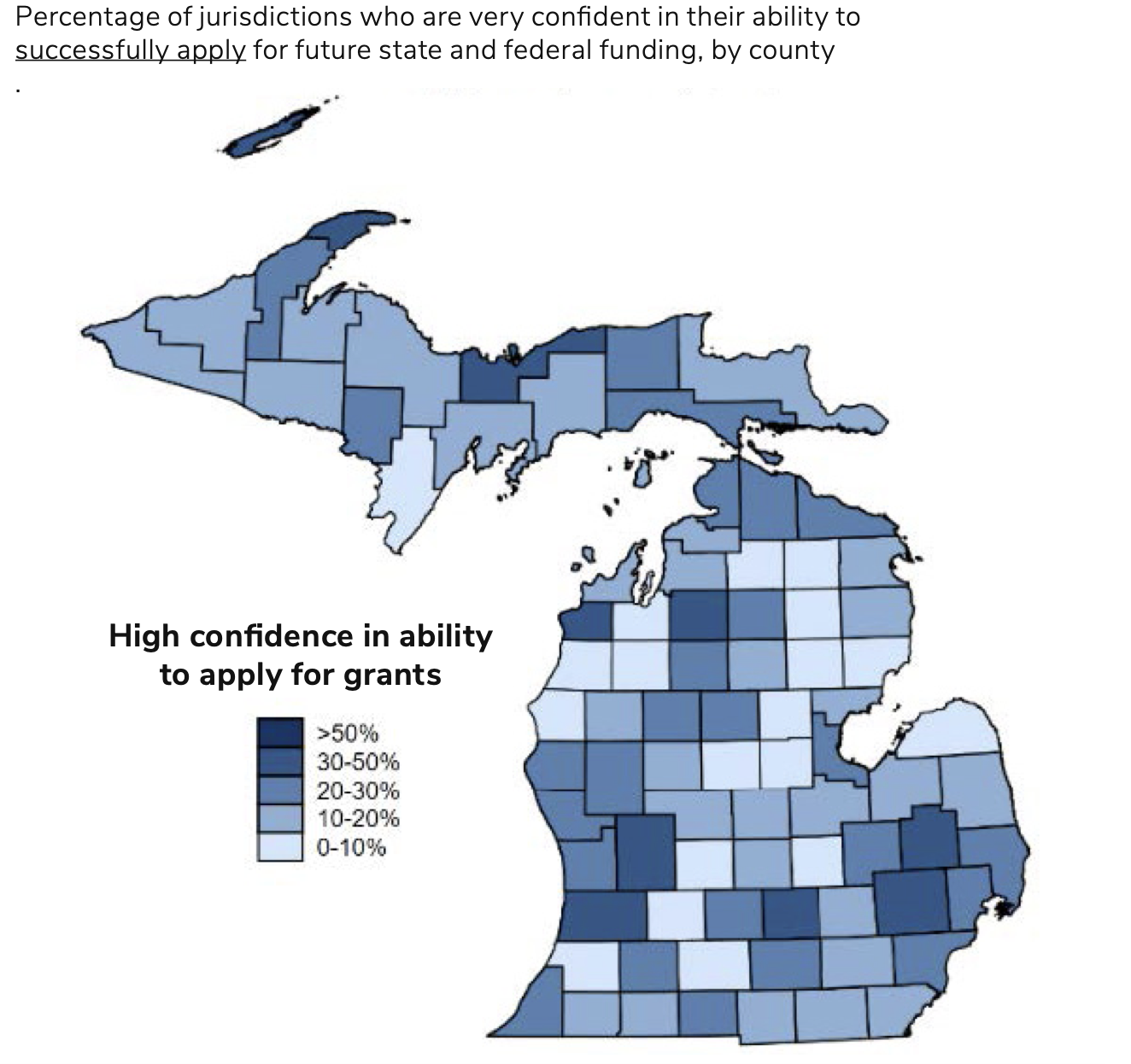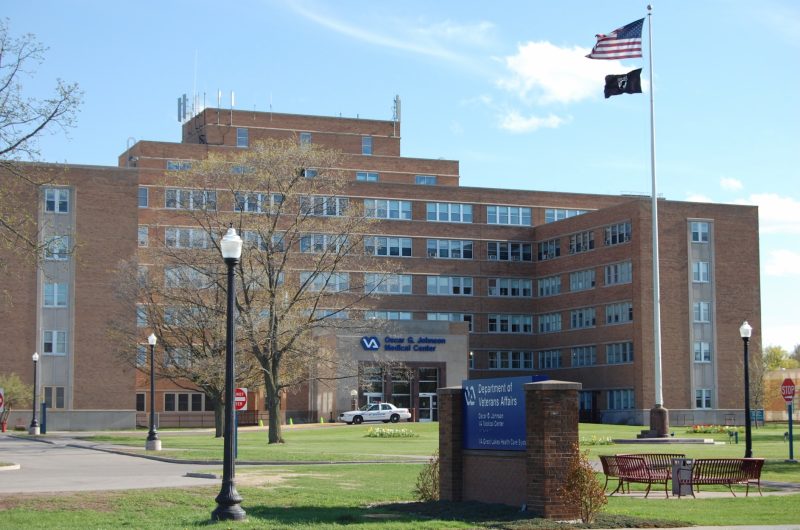U.P. local government leaders identify challenges in getting state and federal grants

The following is the second of two articles we are publishing by Debra Horner, Natalie Fitzpatrick, and Thomas Ivacko at the University of Michigan’s Center for Local, State, and Urban Policy (CLOSUP). This article highlights the difficulties Michigan’s local governments, especially in the Upper Peninsula, face in accessing and managing federal funds from recent legislation.
Let us know your thoughts in the comments below.
—
Over the past few years, federal legislation such as the American Rescue Plan Act of 2021 (ARPA) and the Infrastructure Investment and Jobs Act (IIJA) has made available unprecedented levels of funding for local government projects and investments. However, it can be challenging to figure out where and how to access these funding opportunities and then to manage the (sometimes) burdensome requirements for administering any funding that is awarded, particularly for smaller local governments with access to fewer resources.
The latest Michigan Public Policy Survey (MPPS) at the University of Michigan asked local government officials statewide to assess their jurisdiction’s capacity for pursuing external grant funding from the state and federal governments.
Currently, just 20% of officials from U.P. counties, cities, villages, and townships are “very confident” that their governments can monitor future funding opportunities or successfully apply for those funds.
Meanwhile, 30% of U.P. local governments are “not very confident” (28%) or “not confident at all” (2%) in monitoring these opportunities, and 35% aren’t confident they can successfully apply for grants.
Confidence is slightly higher regarding their ability to meet reporting and auditing requirements for grant spending once grants have been received. Among U.P. leaders, 32% are very confident in their reporting capacity, compared with 20% who are not very confident (15%) or not at all confident (5%).
Not surprisingly, given limited or even non-existent staffing in many jurisdictions, the region’s smallest locales are the most concerned about their grant-seeking capacity. Just 15% of local leaders from U.P. communities with fewer than 1,500 residents are very confident their jurisdictions can successfully apply for future state or federal grant funding and 43% are not confident in this ability.
The statewide map in Figure 1 below displays, by county, the percentage of local officials who are “very confident” in their jurisdiction’s ability to successfully apply for future state and federal funding or grants. Local leaders’ responses are aggregated at the county level. Lighter shades show where a relatively lower percentage of local officials within that particular county are very confident, while the darker shades indicate a higher percentage of local officials who are very confident. So, for example, in counties colored in the darkest shade of blue, local officials from more than half (over 50%) of the cities, villages, or townships within that county say they are “very confident” they can apply for future grant funding.









Dissolve all the existing counties. Divide UP into four regional districts. Establish UP wide coordinating authority (reporting to state government) with final authority over spending and economic development. Absorb the fragmented planning, research and funding initiatives and agencies into the coordinating authority.
Otherwise, don’t plan on anything changing
I don’t see the map. Did you forget to attach it.
Now posted
As someone who has spent the past 25 years documenting and writing about a 10,000 mile stretch of rural America and not only focusing on the UP, though I cannot see the map in my feed, what the article is saying is true in every rural county where I travel throughout our country and Canada. Much will be covered in my forthcoming book, it is also the theme of our documentary Route 2 Elsewhere available on PBS. Applying for grants in rural America is huge yet not done with any efficiency. It’s hard thankless work applying for grants. Yet so very important. Combining county services is a potential answer though it tends to be nearly impossible given the failure of individual citizens and government bodies to get along. Some try consolidating schools but can’t pull it off because their sports teams have different mascots. Canada does it by consolidating rural towns and listing each former entity separately under the name of the town. Jury is still out on that. What you are doing through Rural Insights is very important to the UP but I don’t see much “beyond” in your data. This data shows the differences in populated areas compared to urban and suburban counties.
The rural funding issue makes a lot of sense to me. We have a cabin on a lake outside of Amasa. Electricity was never brought to this area. At one point, the area was under WE Energies, now under a company in Marquette, I guess. On the other hand, my daughter and son-in-law have a cabin in a very similar rural area between Stephenson and Crivitz and not only do they have electrical service, but all residents were just brought Hi-Speed Internet. Our President promised “high-speed internet for all”. It would be nice to just have the choice of electricity or off-grid. I assume it’s up to someone in local government (Crystal Falls Township, Iron County, who knows?) to apply for the grants? I’m assume neither will ever happen for our little community.
I never thought the Grant System was a good idea. Divide the tax money on a per-person basis….with some consideration of geographic size. The Grant System disproportionately rewards the good writer.
I don’t see the map either.
Good suggestions here in terms of consolidating, but as Mr Wierenga noted, local affiliation is a very strong thing in rural areas. Michigan has 83 counties (Minnesota has 87 but we have more land mass), does it need 83 counties in 2023? Of course the answer is no, but the situation is unlikely to change. There is certainly something to be said for local rule which can understand local situations. But differences between many rural counties are really not that great, distances to provide services would be the main issue, but then again, you would think that could be done and with more streamlining at a lower cost than having three independent units. I know that some services are shared between counties and municipalities already…good trend.
When you cite studies and maps, please include links. Otherwise, readers miss much.